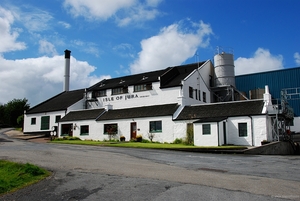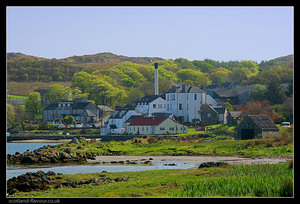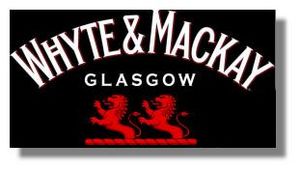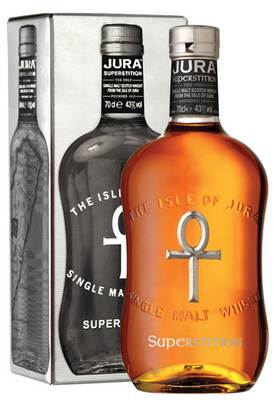|
|
Release Notes
A union of two Jura malt whisky styles: one bold, strong and peated, the other warm and delicate. This unique whisky is created from the marriage of traditional Islay style peated barley and a selection of aged malts.
The Whisky Exchange
3rd Party Tasting Notes
Nose: Very light peat smoke, but also some sherryish sweetness.
Palate: Smooth. Waxy. Piney, honeyish. Developing sweet creaminess. Opens very slowly.
Finish: Salty, with a surprising sting.
Comment: It is good to have a more muscular Jura, but I find this a bit too smooth. I would prefer something less sophisticated and more sexy. Must be the size of those paps.
Rating: 8/10
Palate: Smooth. Waxy. Piney, honeyish. Developing sweet creaminess. Opens very slowly.
Finish: Salty, with a surprising sting.
Comment: It is good to have a more muscular Jura, but I find this a bit too smooth. I would prefer something less sophisticated and more sexy. Must be the size of those paps.
Rating: 8/10
Michael Jackson, Whisky Magazine #31
Nose: Heathery with hints of hard Highland toffee, wet bracken, smoke, date, chocolate-covered raisins. Water brings polished oak, nuts and heather blossom.
Palate: Soft, with an immediate puff of heathery smoke playing alongside toffee, crisp malt. Good balance and weight.
Finish: Lightly smoky.
Comment: The smoke gives extra character to the often slightly rigid Jura style. Great price too!
Rating: 7.75/10
Palate: Soft, with an immediate puff of heathery smoke playing alongside toffee, crisp malt. Good balance and weight.
Finish: Lightly smoky.
Comment: The smoke gives extra character to the often slightly rigid Jura style. Great price too!
Rating: 7.75/10
Dave Broom, Whisky Magazine #31
Nose: Cider. Burnt apple-tree. A rustic bouquet. Cow-shed. Distant smokiness. Earthy roots. Freshly baked multi-grain bread. Sultanas. A seashore echo.
Palate: Smooth and soft. Too soft. Sweetness thickens mouthfeel and taste. Nutty. Wood is there, not dominating but blurring the flavours.
Finish: Slightly spicy, sweet. Liquorice. lacks elegance.
Comment: The nose is lively but the palate is put to sleep by sweetness.
Rating: 7.25/10
Palate: Smooth and soft. Too soft. Sweetness thickens mouthfeel and taste. Nutty. Wood is there, not dominating but blurring the flavours.
Finish: Slightly spicy, sweet. Liquorice. lacks elegance.
Comment: The nose is lively but the palate is put to sleep by sweetness.
Rating: 7.25/10
Martine Nouet, Whisky Magazine #45
The Distillery: Isle of Jura
| Established: 1810 |
| Silent since: False |
| Address: Craighouse, Isle of Jura PA60 7XT, UK |
| → website |
As for the Isle of Jura distillery itself: details of the packaging and labeling have changed a lot over the years, but the characteristic bulky shape of the bottle has remained the same. It"s perhaps a smidgen too bulky for my grubby little hands, but in general the bottle is perfect to bring along during a hike with some friends. When I"m really concentrating on the nosing of a whisky the oil in the regular expressions can put me off, but the smoothness makes it perfect for outdoor dramming. That goes for the lightly peated "Superstition" that was released in 2002 as well - although I"d have to admit that I prefer the real stuff from Islay in winter time.
The Isle of Jura distillery is located so close to the island of Islay that they often participate in the annual "Feis Ile" whisky festival of the Islay distilleries. But even though the Isle of Jura distillery is located just a ferry ride away from "the parish of peat", its house style is completely different. They produced a few peated batches, but most of the regular expressions show a trademark oily profile - not unlike cod liver oil.
In 1949 he was one of the founders of Tullibardine and after he constructed Isle of Jura he went on to build Glenallachie distillery in 1967. Of these three distilleries, his connection with Jura may have been the strongest; he learnt to fly so that he could easily travel to and from the island. Jura Superstition
Delmé-Evans remained as managing director of Isle of Jura until his retirement in 1975. At that time Charles Mackinlay & Co. were still involved as well. That company was already more than century old when they became involved with Isle of Jura. Its founder (appropriately named Charles Mackinlay) was an even bigger name in the whisky industry than Delmé-Evans; he was one of the inventors of blended whisky in the 19th century, along with Andrew Usher. In fact, quite possibly the best "regular" blend I"ve tried was the "Original Mackinlay 21" from the late 1980"s and early 1990"s. By that time the company was already owned by Invergordon.
Granted, the new Jura distillery sits at the same location as the old Jura distillery, but that one was dismantled in 1901 by proprietor James Ferguson after a conflict with land owner Colin Campbell. It wasn"t until 1963 that a brand new distillery was built to help support the island"s economy. Driving forces behind the resurrection of malt whisky production on the island were local land owners Robin Fletcher and Tony Riley-Smith, whisky blenders and merchants Charles Mackinlay & Co. and the architect William Delmé-Evans.

The name William Delmé-Evans pops up in the history books of many distilleries in Scotland. William was born in Wales, but his passion for brewing and distilling pulled him to Scotland.
It"s a trait I"ve also found in some official releases from the Tobermory distillery on the nearby island of Mull. This could be a coincidence, or an effect of "terroir" issues. Given the fact that the original Jura distillery (founded in 1810 by Archibald Campbell) was dismantled in 1901 and a new Jura distillery was constructed in 1963, it"s difficult to tell, really.
If any bottles that were made at the old Jura distillery in the 19th century would have survived to this day, oxidation would have changed the whisky so much by now that a comparison would be pointless. Besides, if such bottles existed they would surely end up at a whisky auction where it would be sold at an incredibly inflated price to a "nouveau riche" collector. I wouldn"t personally be inclined to invest a considerable amount of money in such a bottle anyway, since the connection of the old distillery to the current Isle of Jura distillery is fairly flimsy to begin with.
Invergordon bought Charles Mackinlay & Co. (who owned the Isle of Jura and Glenallachie distilleries) from Scottish & Newcastle Breweries in 1985. The whisky industry is like the ocean, in the sense that the small fish are eaten by slightly bigger fish, who are in turn eaten by the even bigger fish. So, in 1993 Invergordon Distilleries was taken over by Whyte & Mackay.
A little over a decade later an even bigger fish came swimming by - all the way from India. In 2007 the United Spirits group (controlled by Indian politician and business tycoon Vijay Mallya) bought Whyte & Mackay. This put the Dalmore, Fettercairn, Isle of Jura and Tamnavulin distilleries under Asian control. It wasn"t like they were the first - the ownership of distilleries like Auchentoshan, Ben Nevis, Bowmore, Glen Garioch and Tomatin has been in Asian hands since the 1990"s. So, "Scotch" malt whisky flourishes partly thanks to funding from Asia.

2007 - Whyte & Mackay is bought by United Spirits, the liquor company of Indian tycoon Vijay Mallya.
And I think that"s all I have to say about Jura at the moment, I think. Rest assured that this page will be updated once I have some interesting new developments at Jura to report on. With Richard Patterson acting as a "brand ambassador on acid" for the Jura whisky that can"t be long ;-)
In the new Millenium
2003 - The Isle of Jura "Superstition" is launched; a vatting of regular Isle of Jura and the heavily peated variety that has been distilled since 1999. The result of the vatting is a relatively lightly peated whisky.
Trivia:
- When the first Isle of Jura distillery was founded in 1810, it was under the name "Small Isles Distillery".
- You may think that I"ve mistakenly used a picture of a rum distillery in the Caribbean at the top of this page. but the mild micro-climate around the Isle of Jura distillery actually allows palms to grow there - but not comfortably...
- The number of stills at Isle of Jura distillery was expanded from two to four in 1978. The stills are unusually tall; over 25 feet which makes them almost as high as Glenmorangie"s.
from Malt Madness
The Owner: Whyte & Mackay
| Established: 1844 |
| Silent since: False |
| Address: Dalmore House, 310 St Vincent Street, Glasgow, Scotland G2 5RG |
| → website |
March 2009 saw John Beard, former chief executive of Bacardi Brown Forman, replace Ashwin Malik as chief executive.
In October 2009, Whyte and Mackay Master Blender Richard Paterson announced on his blog site that the 30 year old Whyte and Mackay whisky had been voted the best blended whisky in the world in two different prestigious whisky competitions.

Whyte and Mackay were sponsors of the English football team Leeds United from 2003 to 2006, but their backing did little to save the club from a financial crisis which cost them their place in the Premier League. The brand currently sponsors Edinburgh club Hibernian in the Scottish Premier League, the PDC Premier League Darts and the Force India Formula One racing team (also owned by Dr Vijay Mallya).
In 2009 the company expanded into Social Media setting up Twitter accounts for Whyte and Mackay whisky and Jura Superstition. It also launched an online and offline game comprising of Twitter and GPS updates called the Whyte and Mackay Safari Hunt.

Charles Mackay and James Whyte started a company as whisky merchants and bonded warehousemen in Glasgow in 1882. W&M Special was their first blended whisky and it was successful in the United Kingdom and other English speaking countries around the world (particularly Australia, Canada, New Zealand and the United States). After World War II they focused on the home market and now sell more than 1 million cases a year.
The company transcends markets including Single Malt and Blended Scotch Whiskies, Liqueurs, and Vodkas. Their brands include the W&M 13/19/22/30/40yr old blends; Dalmore, Isle of Jura, and Fettercairn Single Malts; Glayva liqueur; and Vladivar Vodka.
Whyte & Mackay Ltd is a Scottish company producing alcoholic beverages. It was founded in 1844 and is based in Glasgow, Scotland. Since May 2007 Whyte & Mackay has been owned by United Breweries Group, a large Indian conglomerate.
from Wikipedia
The Owner: Emperador
| Established: 1990 |
| Silent since: False |
| Address: |
| → website |

Emperador Inc. (EMP) is a holding company which operates an integrated business of manufacturing, bottling and distributing distilled spirits and other alcoholic beverages from the Philippines and Europe.
Through Emperador Distillers, Inc. (EDI), EMP has established its identity in the Philippine alcoholic beverages business with steady growth and production of high quality liquor. EDI is the Philippines’ largest liquor company and the world’s largest brandy producer.
The consolidated product portfolio is comprised of domestic and foreign brands led by Emperador Light, Emperador Deluxe, Andy Player Whisky, Smirnoff Mule, The Bar, The Dalmore and Jura Scotch single malt whiskies, and Fundador.
In 1990, Emperador Brandy was launched as Philippines’ first brandy label. This brandy was produced through a delicate blending and aging process. The result is a brandy of distinctive aroma flavor and consistent mellow quality. One look, one sip and it becomes clear to all that Emperador is a world-class product that is easily affordable.
Through dynamic marketing and by establishing a reputation for product quality, EDI created demand for brandy in the Philippine spirits market. Emperador Brandy has now started to expand its brand footprint outside the Philippines. It holds its position as the world's largest brandy by volume and it is now being distributed in 40 countries across Asia, North America, Africa, Middle East, and Europe.
In 2010, Emperador Light was introduced in response to a growing market for alcoholic beverages with lower alcohol content and targeted the younger alcoholic beverage consumers. In 2014 and 2015, the company acquired Whyte and Mackay, and Bodegas Fundador, respectively. Through Whyte and Mackay Group Limited (WMG or Whyte and Mackay) of United Kingdom, EMP has entered the global Scotch whisky business.
WMG has a rich heritage of a Scottish spirits company, which is the fifth largest Scotch whisky manufacturer in the world, and its products are distributed in over 50 countries. And with EMP’s most recent purchase of the brandy and sherry business from Beam Suntory (Bodegas Fundador, completed in February 2016), EMP has fortified its brandy and sherry business, and has strengthened its overall liquor business.
As a global company, Emperador Inc. is now able to capitalize on its worldwide distribution network catapulting its full range of brandy and whisky products led by Emperador and Fundador brandy as well as single malt whisky The Dalmore and Jura plus Whyte & Mackay and John Barr blended whiskies.
Through Emperador Distillers, Inc. (EDI), EMP has established its identity in the Philippine alcoholic beverages business with steady growth and production of high quality liquor. EDI is the Philippines’ largest liquor company and the world’s largest brandy producer.
The consolidated product portfolio is comprised of domestic and foreign brands led by Emperador Light, Emperador Deluxe, Andy Player Whisky, Smirnoff Mule, The Bar, The Dalmore and Jura Scotch single malt whiskies, and Fundador.
In 1990, Emperador Brandy was launched as Philippines’ first brandy label. This brandy was produced through a delicate blending and aging process. The result is a brandy of distinctive aroma flavor and consistent mellow quality. One look, one sip and it becomes clear to all that Emperador is a world-class product that is easily affordable.
Through dynamic marketing and by establishing a reputation for product quality, EDI created demand for brandy in the Philippine spirits market. Emperador Brandy has now started to expand its brand footprint outside the Philippines. It holds its position as the world's largest brandy by volume and it is now being distributed in 40 countries across Asia, North America, Africa, Middle East, and Europe.
In 2010, Emperador Light was introduced in response to a growing market for alcoholic beverages with lower alcohol content and targeted the younger alcoholic beverage consumers. In 2014 and 2015, the company acquired Whyte and Mackay, and Bodegas Fundador, respectively. Through Whyte and Mackay Group Limited (WMG or Whyte and Mackay) of United Kingdom, EMP has entered the global Scotch whisky business.
WMG has a rich heritage of a Scottish spirits company, which is the fifth largest Scotch whisky manufacturer in the world, and its products are distributed in over 50 countries. And with EMP’s most recent purchase of the brandy and sherry business from Beam Suntory (Bodegas Fundador, completed in February 2016), EMP has fortified its brandy and sherry business, and has strengthened its overall liquor business.
As a global company, Emperador Inc. is now able to capitalize on its worldwide distribution network catapulting its full range of brandy and whisky products led by Emperador and Fundador brandy as well as single malt whisky The Dalmore and Jura plus Whyte & Mackay and John Barr blended whiskies.
from Emperador
The Owner: Alliance Global Group
| Established: 2006 |
| Silent since: False |
| Address: Quezon City |
| → website |
Alliance Global Group, Inc., styled on its logo as AllianceGlobal and also known as Alliance Global, Inc. (AGI), is a large holding company with business activities spanning the food and beverage industry (including both production and restaurant operations), gambling, and real estate development.
It is one of the largest companies based in the Philippines, and is controlled by the family of its chairman and CEO Andrew L. Tan. The company headquarters is in the Bagumbayan area of Quezon City in the Manila metropolitan area (the national capital region of the Philippines) on the island of Luzon.
Alliance Global Group is composed of several companies, including:
It is one of the largest companies based in the Philippines, and is controlled by the family of its chairman and CEO Andrew L. Tan. The company headquarters is in the Bagumbayan area of Quezon City in the Manila metropolitan area (the national capital region of the Philippines) on the island of Luzon.
Alliance Global Group is composed of several companies, including:
- Emperador, Inc. – A beverage production company best known for its Emperador brandy. As of December 2015, Emperador is also the owner of Fundador Pedro Domecq, Spain’s largest and oldest brandy, as well as three other brands, Terry Centenario, Tres Cepas, and Harveys, having acquired them from Beam Suntory. In 2014, Emperador, Inc. purchased the Scottish whisky company Whyte and Mackay from India-based United Spirits Ltd for 430m.
- The Bar Vodka
- Megaworld Corporation, the Company's Main Real Estate Arm.
- Empire East Properties / Megaworld Central Properties
- Travellers International
- McDonald's main Franchise in the Philippines.
- Global Estate Resorts Inc

from Wikipedia
